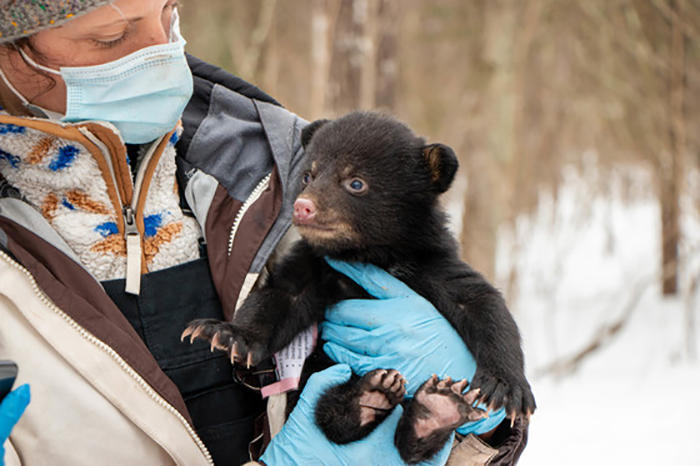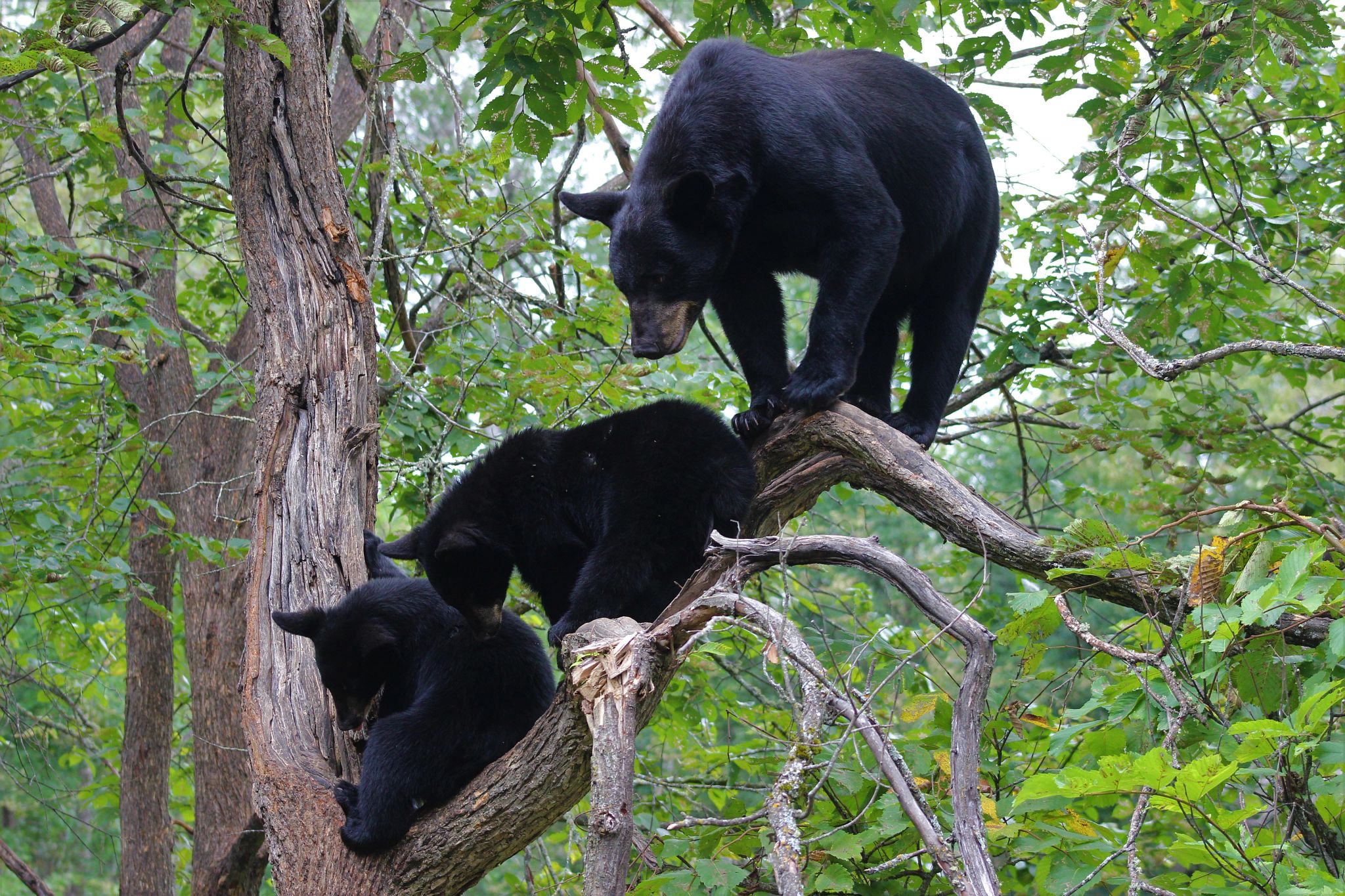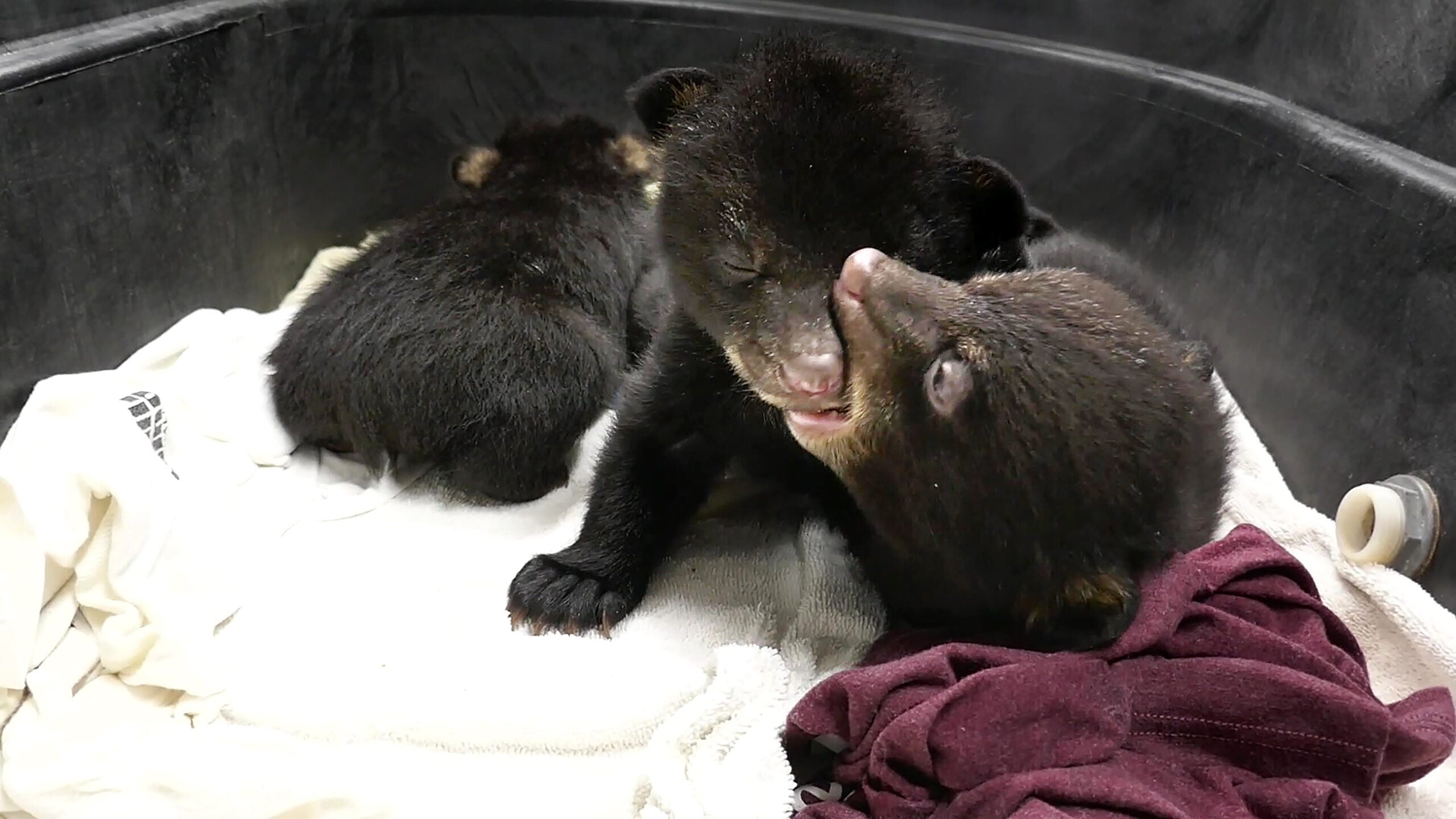Finding a bear den is like finding a needle in a haystack for Jennifer Price Tack with the Wisconsin Department of Natural Resources.
“It’s very difficult. I have 90 acres out near Monico in Oneida County, and I’m always out there looking for bear dens. I know we have bear on the property. We’ve had them on camera, and I have not found a den. And, I know what to look for,” Price Tack, the DNR’s large carnivore and elk research scientist, said.
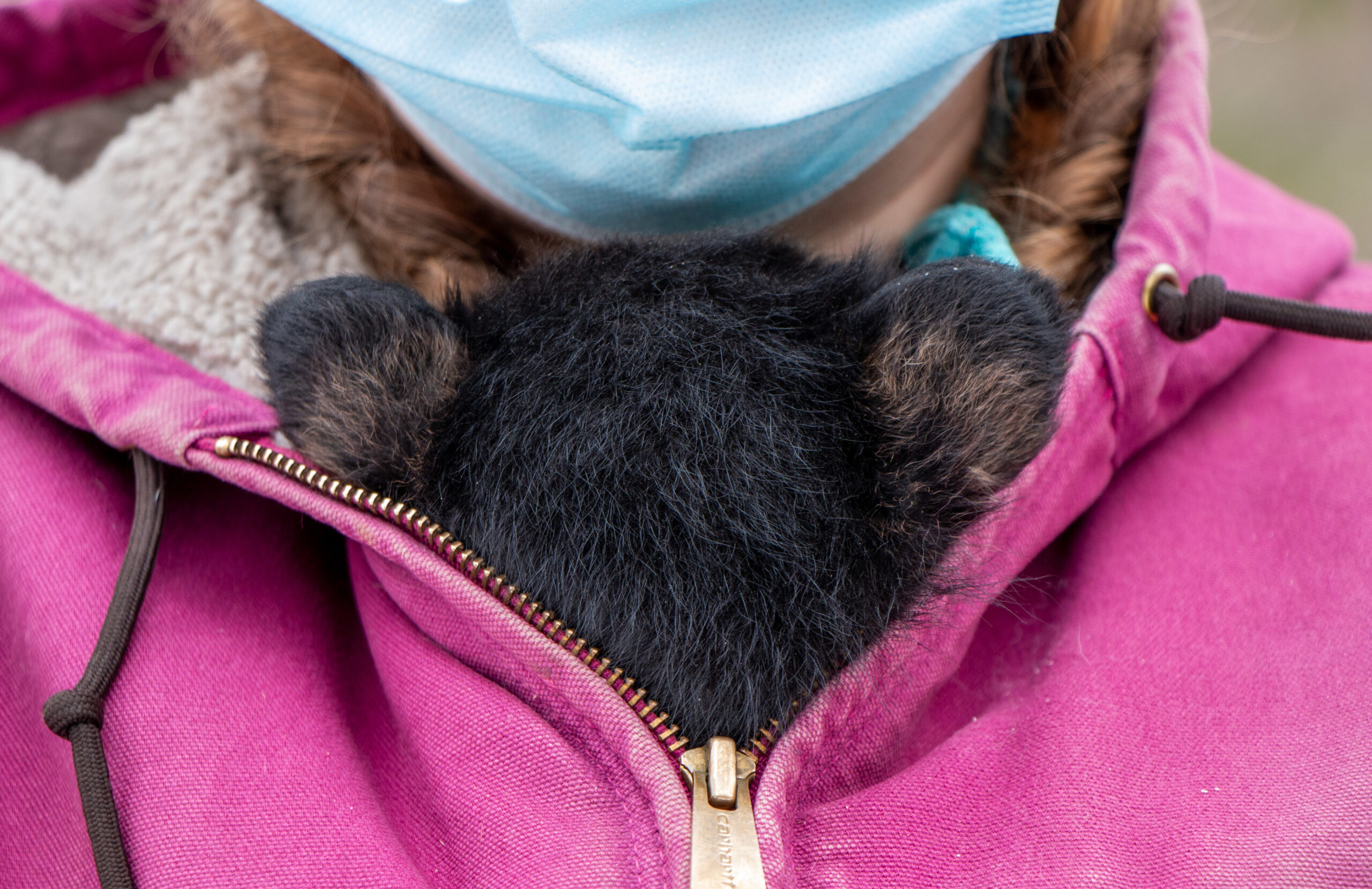
News with a little more humanity
WPR’s “Wisconsin Today” newsletter keeps you connected to the state you love without feeling overwhelmed. No paywall. No agenda. No corporate filter.
That’s why the DNR is asking for the public’s help to spot bear dens as part of its ongoing black bear litter and diet survey. The study began in early 2022, and it will provide new estimates of reproductive rates for black bears in each of the state’s management zones. People are urged to report any information online about known black bear dens without approaching or entering them.
Price Tack said the goal is to improve the accuracy of the agency’s population models. Reproductive rates are an important factor in obtaining reliable projections, and that model is used when deciding hunting quotas for bears.
“The reproductive rates we’re interested in are litter size, litter frequency and cub survival,” Price Tack said.
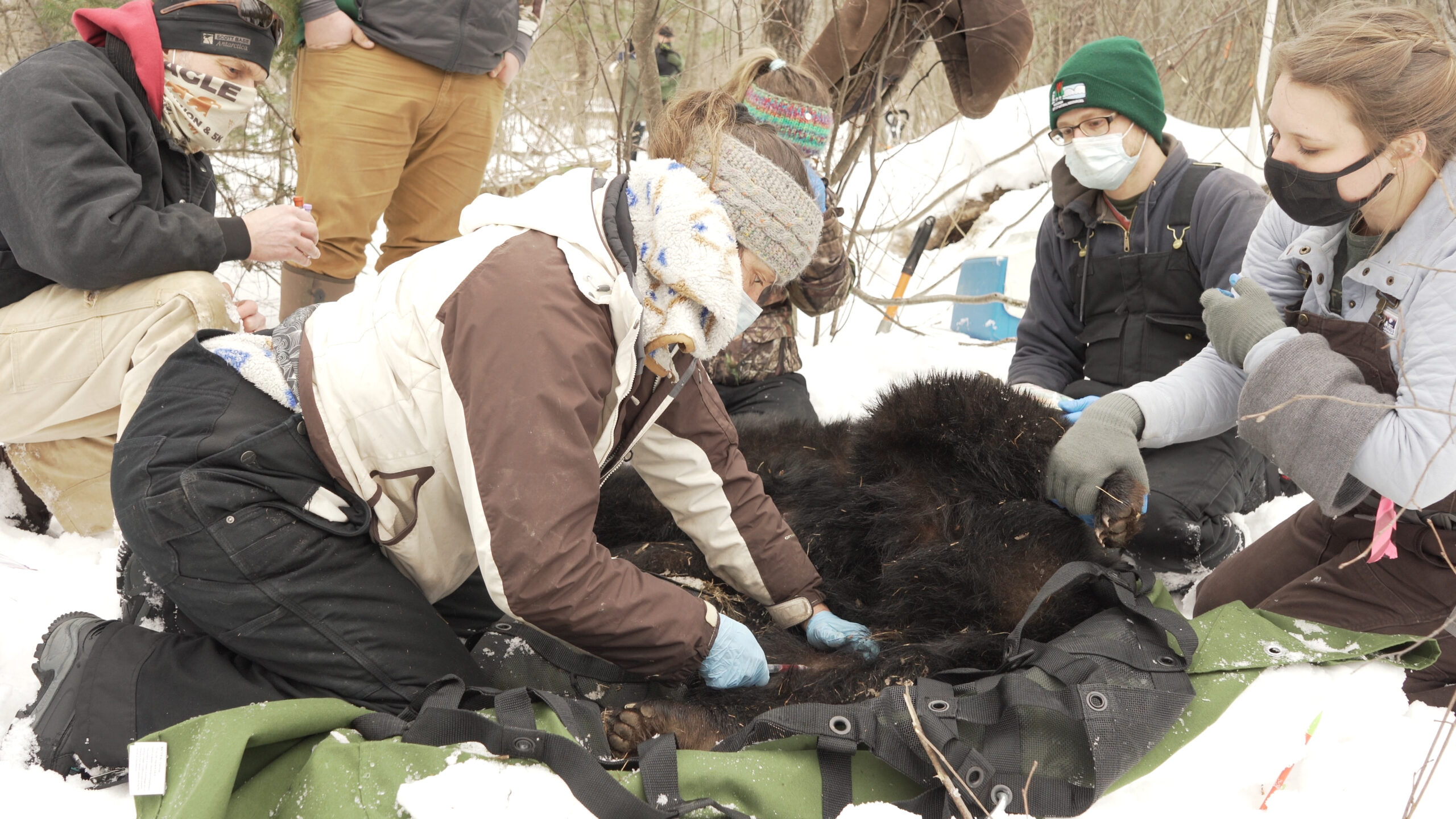
Staff have already placed GPS collars on 13 female bears, known as sows, across nearly a dozen counties extending from Iron County in far northern Wisconsin to as far south as Jackson County. The DNR hopes to collar 25 more this winter. The collars help the agency locate the sows in the coming years and learn more about what they’re eating.
Price Tack noted bears are a major source of corn damage in the state, pulling down stalks and munching kernels off corn cobs.
“There is some evidence that bears in areas with a lot of agriculture, with a lot of corn, are having larger litters, so that’s something we’re interested in finding out more about,” she said.
A normal litter size is typically two to three bear cubs that are usually born in January, according to Randy Johnson, the DNR’s large carnivore specialist. He said one of the other objectives of the survey is to gather hair and tissue samples to examine their diets.
“There’s pretty ample availability of human food out there whether it’s bear baits or agriculture, as well as bird feeders,” Johnson said. “Bird feeder complaints are probably the number one call that we get as far as bear complaints or bear conflict. And, bird seed is jam packed with calories for a bear.”
Johnson said the state currently has about 26,000 bears, which has grown to roughly three times the state’s population in 1989. Northwestern Wisconsin has some of the highest bear numbers, and the population supports hunters killing roughly 4,000 bears each year.
As they seek to improve population models, Johnson said safety is paramount for both the bears and DNR staff when they’re searching for dens. Those who take part go through training with the agency’s wildlife veterinarian on proper use of a drug to immobilize bears, as well as how to monitor their well-being. They also go through a briefing with staff and landowners who report the dens.
The dens are typically located in an underground cave, underneath fallen trees or root balls, or even in a nest on the ground.
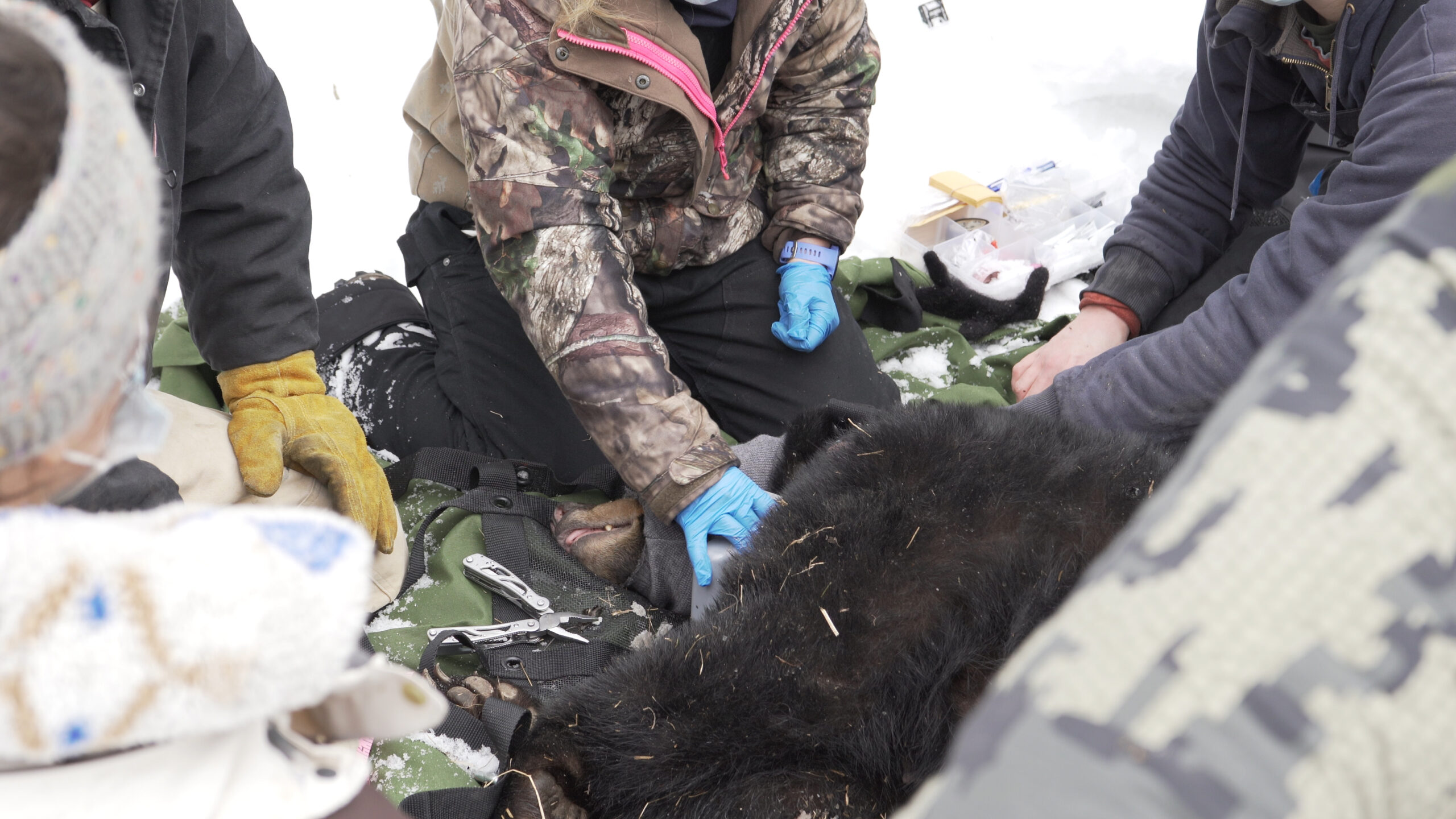
Once a den is spotted, only a limited few will approach it to reduce stimulation for the bears. If a sow and her cubs are inside, staff will prepare an immobilization drug with a syringe pole that’s about 4 feet long. Then, a “den diver” will crawl into the den with the syringe pole. A couple of people will stand behind that person with each of them grabbing on to one of the diver’s legs. Another individual will have bear spray on hand, but Price Tack said there have been no negative encounters with the bears.
“They’re aware of our presence, too — almost always they are. A lot of times, they’re staring at us when we’re entering the den, but they’re lethargic,” Price Tack said. “There’s nothing like the adrenaline kick that you get when you’re entering a bear den for the first time.”
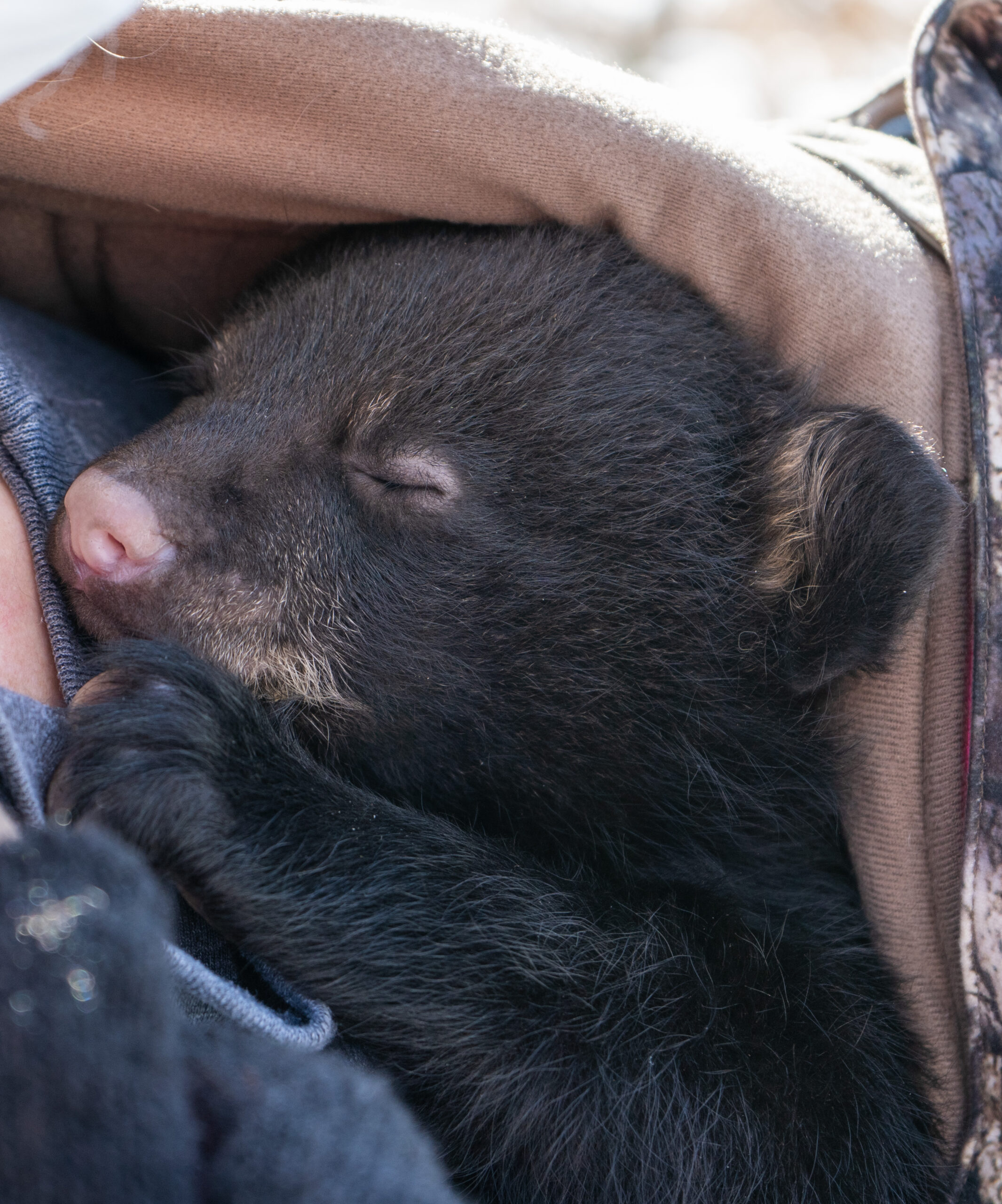
Photo courtesy of Wisconsin DNR/Rachel Fancsali
Once they inject the drug, it takes about 20 minutes for the bear to become immobilized. Then, the team removes the mother and her cubs from the den. Staff monitor the mom’s breathing and heart rate while the team gathers samples and data on the bear’s weight, age, and body measurements. While they’re working on mom, staff or landowners who spotted the dens are tasked with keeping the cubs warm.
“We have a number of people standing by with big poofy winter jackets on, and you stick the cub in your chest and you keep the cub warm,” Johnson said.
Price Tack said they shield the cubs in their coats because their bodies aren’t good at regulating their internal temperature yet.
“That just ensures that those cubs are going to stay safe, they’re going to stay warm, until we get mom taken care of, collared, and put back into the den,” she said. “Then, we’ll put the cubs back in with mom.”
The DNR hopes to collar 100 bears throughout the project, which will last for the next seven to eight years.
Wisconsin Public Radio, © Copyright 2026, Board of Regents of the University of Wisconsin System and Wisconsin Educational Communications Board.
